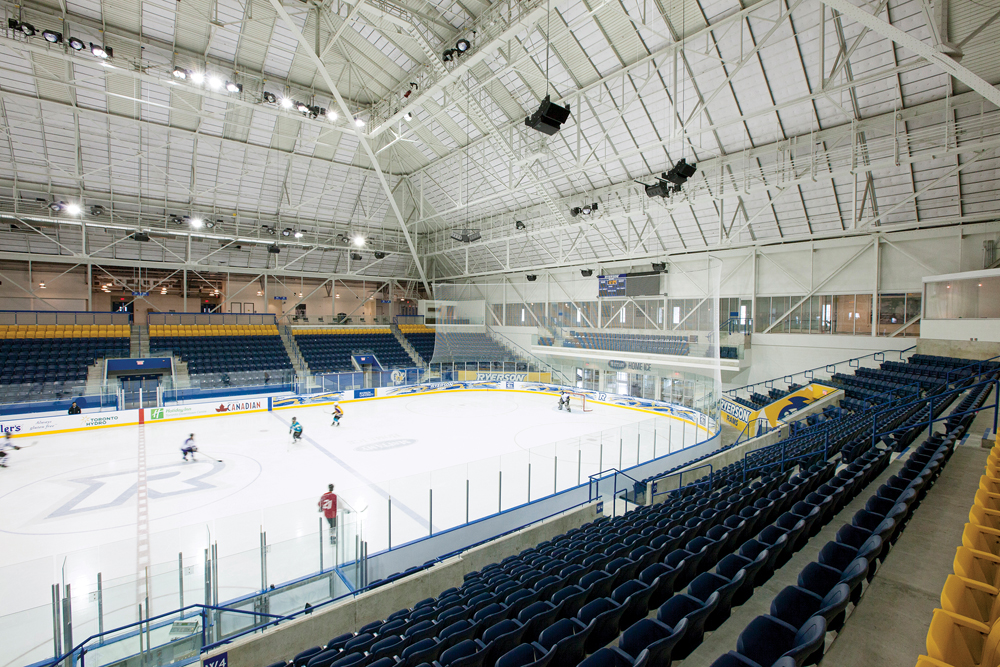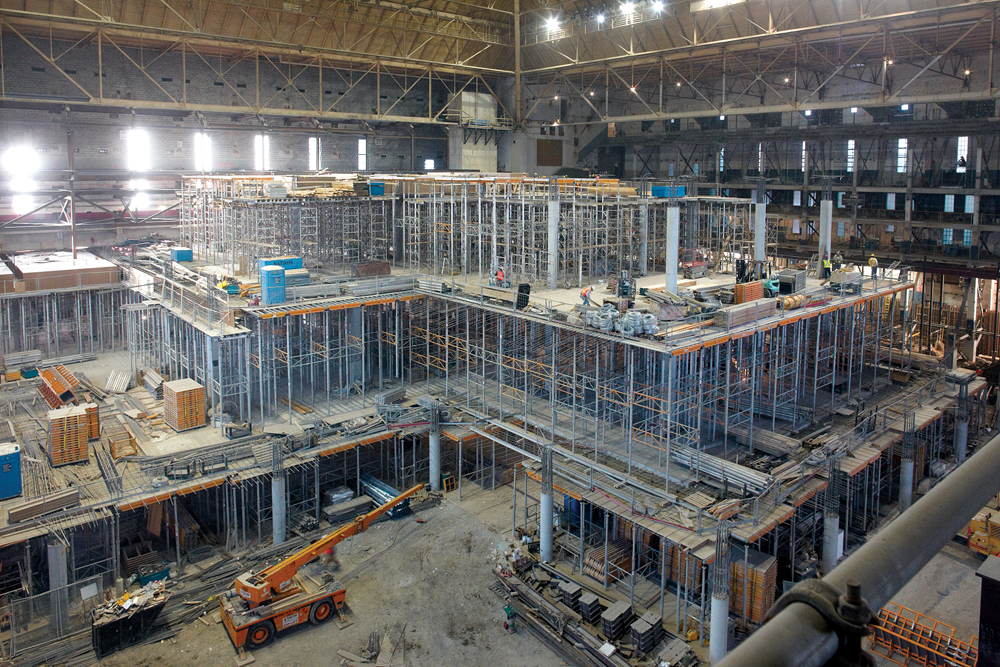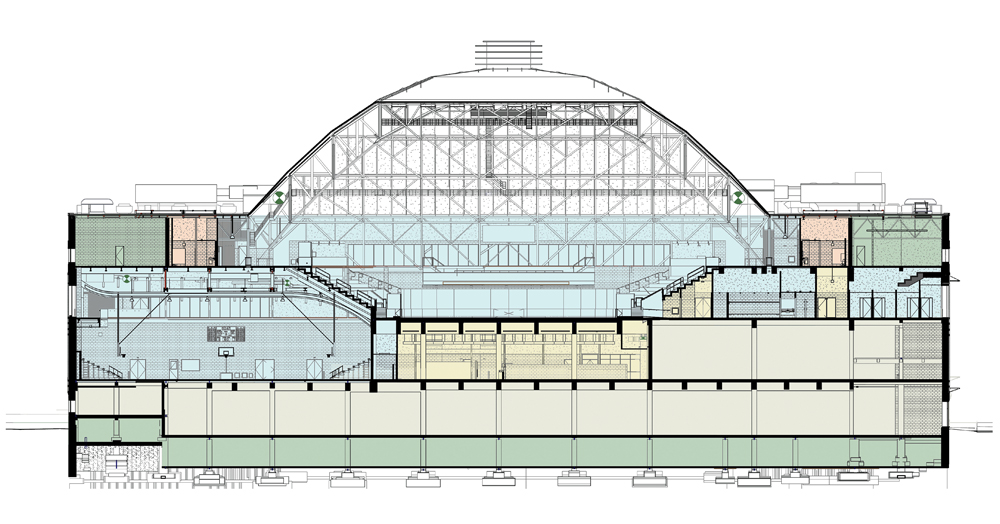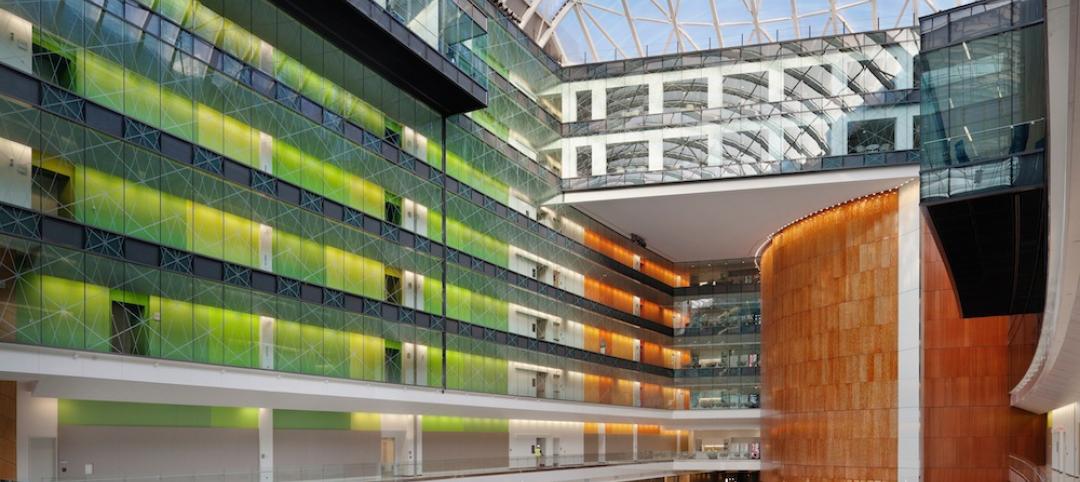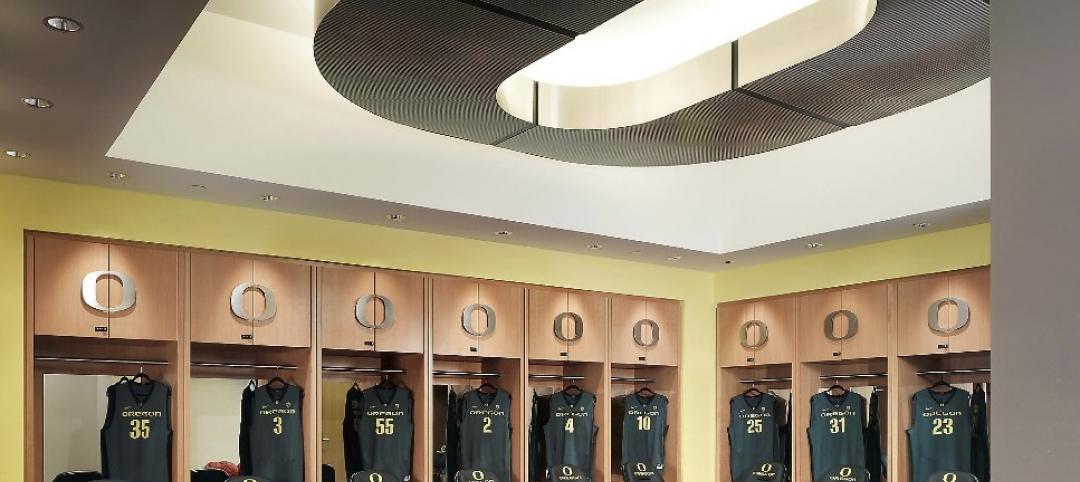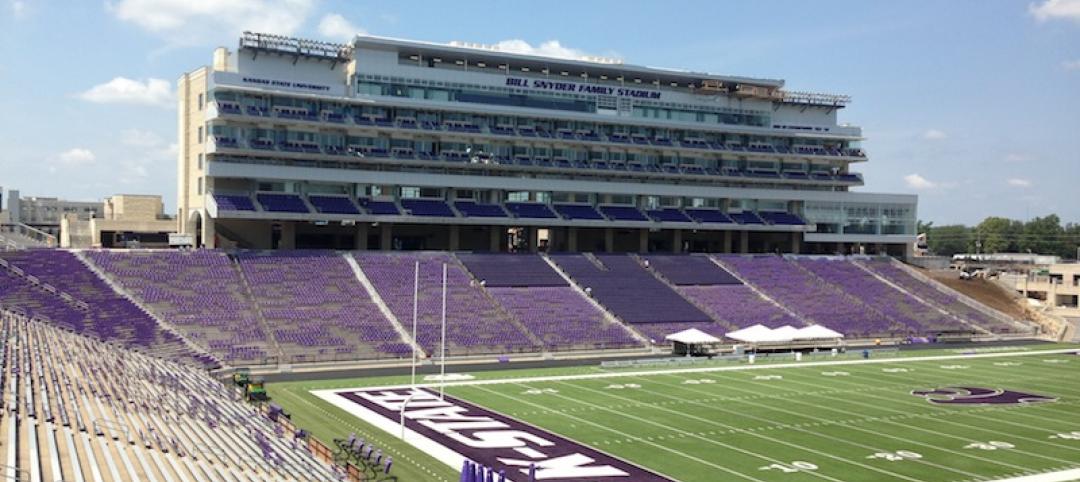Home to the NHL’s Toronto Maple Leafs from 1931 to 1999, Maple Leaf Gardens was widely considered one of the “cathedrals” of ice hockey. The 16,300-seat arena, designed by the prominent Montreal-based firm Ross and Macdonald, also played host to concerts, sporting events, and political rallies, and was known for its superb sightlines.
By the late 1990s, the grand ol’ gal had seen her better days, and an ownership change in the Leafs organization meant the club would be moving to the newly built and larger (18,800-seat) Air Canada Centre. For the next decade, the historic arena sat mostly idle as the new kid in town attracted the major events in Toronto.
In 2004, Loblaw Companies, Canada’s largest food retailer, purchased the Gardens and proposed several unpopular schemes for redeveloping the arena—including one that called for converting the interior to a Real Canadian Superstore and parking structure. It wasn’t until Loblaw was approached by Ryerson University that it would develop a plan that stuck. The downtown-based university was in dire need of a recreation center and a facility for its hockey team. The two organizations, with funding from the Canadian Federal Government and private donors—including a $15 million gift from Canadian homebuilder Mattamy Homes—committed to partner and bring the building back to life.
Their plan was audacious: retain and restore the building’s historic exterior fac?ade, including its steel-frame dome, while gutting the lion’s share of the interior spaces to make way for a new, four-level, multipurpose structure to house a grocery store and retail space at street level (85,000 sf) and the university’s sports complex on the three floors above (220,000 sf). Topping the new structure is a 2,800-seat, NHL-sized ice rink that emulates the original Gardens, with angled corners, rail seats, and its famous “corner blues” seats, which were restored. The $60 million project also added a level of below-grade parking. The iconic marquee was rebuilt and became the new entrance to the Ryerson University Athletic Facility.
Throughout the project, the team monitored the existing structure and exterior walls for movement and strain, using a proprietary computerized fiber-optic system that sounded an alarm and sent email notifications when it registered readings beyond the prescribed tolerances.
MATTAMY ATHLETIC CENTRE AT MAPLE LEAF GARDENS
Toronto, Ont.Building TeamSubmitting firm: BBB Architects Toronto (architect, Ryerson University component)Owner: Ryerson UniversityDeveloper: Loblaw PropertiesArchitect: Turner Fleischer Architects (base building)Historial architect: ERA ArchitectsStructural engineer: expMechanical engineers: The mitchell Partnership (Ryerson University); SNC Lavalin/LKm (base building)Electrical engineers: Mulvey Banani (Ryerson University); Hammerschlag & Joffe (base building)General contractor: ButtconGeneral InformationSize: 305,000 sfConstruction cost: $60 millionConstruction time: January 2010 to October 2011Delivery method: CM at risk
Once the shell was stabilized, the team demolished most of the seating bowl structure and then excavated 23 feet below grade to accommodate the parking level. From there, the four-level, poured-in-place concrete structure was erected in tiers and tied to the existing structure, providing the required support for the shell. The temporary bracing was removed and large openings were cut into the corner buttresses to accommodate parking ramps and the main entrance. A large, 80-by-16-foot opening was created in the north fac?ade to accommodate a new loading dock.
Placing the ice rink atop the new interior structure—50 feet above street level—posed a number of issues for the Building Team. Chief among them was ensuring that the rink would be fully isolated from the structure below. This was accomplished by installing a waterproof membrane to manage against leaks and a thermal barrier sandwiched between the chilled rink slab and the structural slab to help regulate the temperature. A portion of the refrigeration’s waste heat keeps the under-slab of the third floor warm enough to prevent condensation below, and a network of piping in the 3-inch-thick under-slab circulates warm water to keep temperatures constant.
The Reconstruction Awards judges praised the Building Team for its close collaboration in executing this complex redevelopment and restoration project while meeting the requirements of working on a National Historic Site.
“You can’t pull off a project this complex this beautifully without having everyone of the Building Team members on the same page,” said judge Rick Juneau, LEED AP, President of Residential and Restoration with Bulley & Andrews (www.bulley.com).
Juneau and the other judges noted that the project serves as a good case study for cities and municipalities dealing with outdated or derelict sports venues.
This cross section shows the different functions in the facility. The program includes: university athletic space (blue), university circulation areas (yellow), Loblaws retail space (beige), back-of-house space (green), washrooms and locker rooms (red), and common circulation space (gray).
The program also incorporates a 1,000-seat basketball/volleyball gymnasium, training gym, fitness studios, fitness center, and academic and lab space for the university’s sports sciences, kinesiology, and sports therapy departments.
Related Stories
| Nov 13, 2013
Installed capacity of geothermal heat pumps to grow by 150% by 2020, says study
The worldwide installed capacity of GHP systems will reach 127.4 gigawatts-thermal over the next seven years, growth of nearly 150%, according to a recent report from Navigant Research.
| Oct 30, 2013
11 hot BIM/VDC topics for 2013
If you like to geek out on building information modeling and virtual design and construction, you should enjoy this overview of the top BIM/VDC topics.
| Oct 18, 2013
Researchers discover tension-fusing properties of metal
When a group of MIT researchers recently discovered that stress can cause metal alloy to fuse rather than break apart, they assumed it must be a mistake. It wasn't. The surprising finding could lead to self-healing materials that repair early damage before it has a chance to spread.
| Oct 1, 2013
13 structural steel buildings that dazzle
The Barclays Center arena in Brooklyn and the NASCAR Hall of Fame in Charlotte, N.C., are among projects named 2013 IDEAS2 winners by the American Institute of Steel Construction.
| Sep 26, 2013
6 ways to maximize home-field advantage in sports venue design
Home-field advantage can play a significant role in game outcomes. Here are ways AEC firms can help create the conditions that draw big crowds, energize the home team to perform better, and disrupt visiting players.
| Sep 19, 2013
What we can learn from the world’s greenest buildings
Renowned green building author, Jerry Yudelson, offers five valuable lessons for designers, contractors, and building owners, based on a study of 55 high-performance projects from around the world.
| Sep 19, 2013
6 emerging energy-management glazing technologies
Phase-change materials, electrochromic glass, and building-integrated PVs are among the breakthrough glazing technologies that are taking energy performance to a new level.
| Sep 11, 2013
BUILDINGChicago eShow Daily – Day 3 coverage
Day 3 coverage of the BUILDINGChicago/Greening the Heartland conference and expo, taking place this week at the Holiday Inn Chicago Mart Plaza.
| Sep 10, 2013
BUILDINGChicago eShow Daily – Day 2 coverage
The BD+C editorial team brings you this real-time coverage of day 2 of the BUILDINGChicago/Greening the Heartland conference and expo taking place this week at the Holiday Inn Chicago Mart Plaza.
| Aug 29, 2013
First look: K-State's Bill Snyder Family Stadium expansion
The West Side Stadium Expansion Project at Kansas State's Bill Snyder Family Stadium is the largest project in K-State Athletics history.


